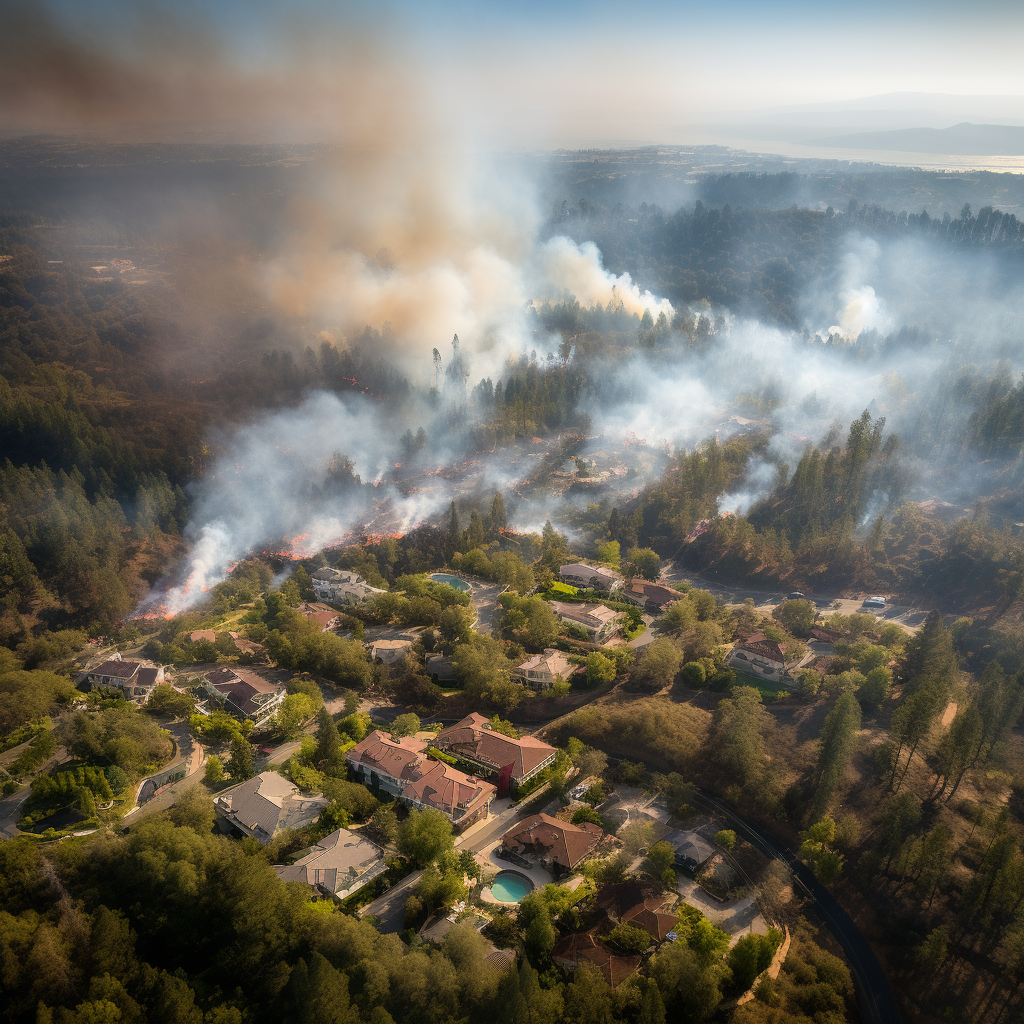
In recent years, the increasing severity and frequency of wildfires have not only heightened the risk to properties and lives but also led to significant changes in the insurance landscape. Homeowners in fire-prone areas are facing the dual challenge of protecting their homes from wildfires while grappling with the escalating costs and availability of insurance. This evolving situation underscores the need for comprehensive wildfire mitigation strategies, where the pioneering technology of waveGUARD Corporation plays a vital role.
The Escalating Insurance Challenge
Insurance companies, responding to the heightened risk posed by wildfires, are becoming more aggressive in their underwriting policies. Many homeowners in high-risk areas are experiencing either the non-renewal of their policies or substantial increases in premiums, making it increasingly difficult to afford necessary coverage. This trend is prompting a growing number of property owners to seek out effective mitigation strategies to reduce their wildfire risk and, potentially, their insurance costs.
Proactive Wildfire Mitigation Strategies
- Creating Defensible Space: Property owners are advised to clear flammable materials and maintain a buffer zone around their homes. This not only helps in slowing down the spread of fire but can also be a factor in insurance assessments.
- Fire-Resistant Construction: Using materials that are resistant to fire for roofing, siding, and other parts of the structure can make a significant difference in the survivability of a home during a wildfire.
- Regular Property Maintenance: Keeping the property clear of dead vegetation, cleaning roofs and gutters, and other maintenance activities can reduce the likelihood of a fire starting or spreading.
- Community Fire Safety Plans: Engaging in community-wide fire safety plans and ensuring that local fire protection is robust can also be a factor in insurance considerations.
The Technological Edge: waveGUARD Corporation
As homeowners and communities seek more effective ways to protect their properties, waveGUARD Corporation emerges as a leader in innovative wildfire mitigation technology. Their advanced wildfire sprinkler spray system offers a unique solution in this challenging landscape.
Key Features of waveGUARD’s System
- Autonomous Detection and Activation: The system detects wildfires autonomously from a significant distance and activates without human intervention, a critical feature during fast-spreading fires.
- Rapid Deployment: Once activated, the system quickly covers the structure and surrounding area with a combination of 100% plant based long term fire-retardant solution and water, significantly enhancing the property’s chances of withstanding a wildfire.
- Independence from Municipal Water Supplies: In critical wildfire situations where municipal water supplies may be compromised, waveGUARD’s system’s self-sufficiency ensures continuous operation.
- Enhanced Reliability: The system’s design eliminates a single point of failure, reliance on external communications such as internet, phone or even satellite, providing dependable protection even in situations where other systems might fail.
Mitigation as a Path to Insurance Stability
Integrating advanced technology like waveGUARD’s with traditional mitigation efforts can not only improve a property’s resilience against wildfires but also potentially influence insurance decisions. Homeowners who demonstrate proactive risk management through such measures might find more favorable terms with insurers, mitigating the impact of rising premiums and policy cancellations.
The increasing threat of wildfires, coupled with the changing dynamics in the insurance industry, calls for a more robust and innovative approach to property protection. The integration of traditional mitigation strategies with advanced technologies like those offered by waveGUARD Corporation provides a comprehensive solution. As homeowners navigate the challenges of protecting their properties in fire-prone zones, embracing such a multifaceted approach becomes essential, not only for safety but also for economic stability in the face of escalating insurance costs.